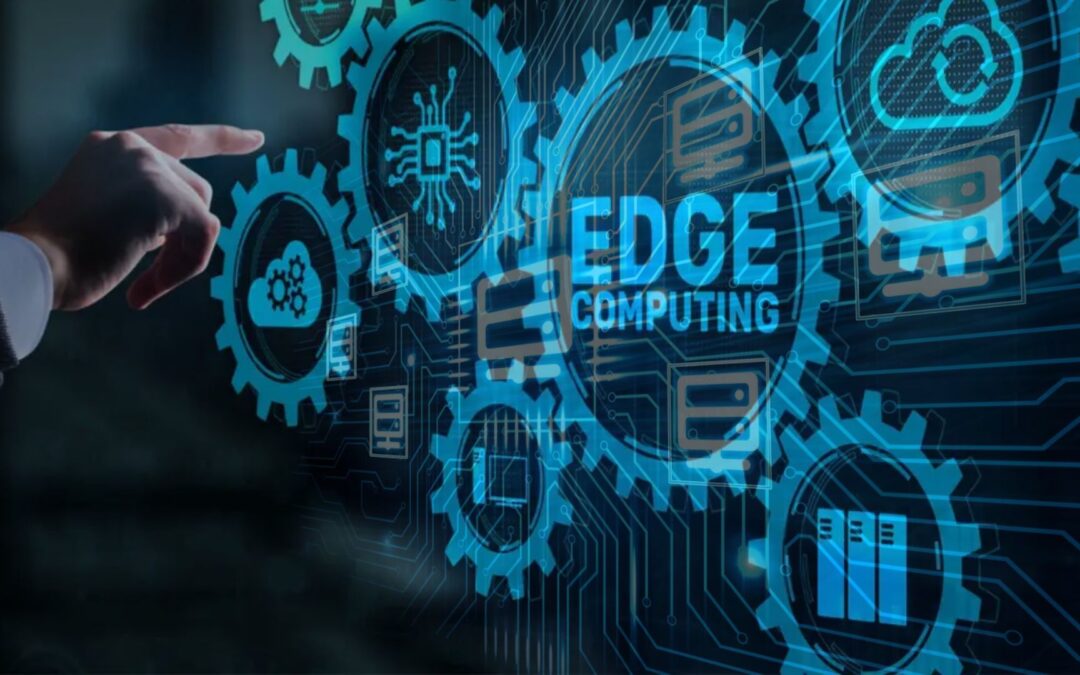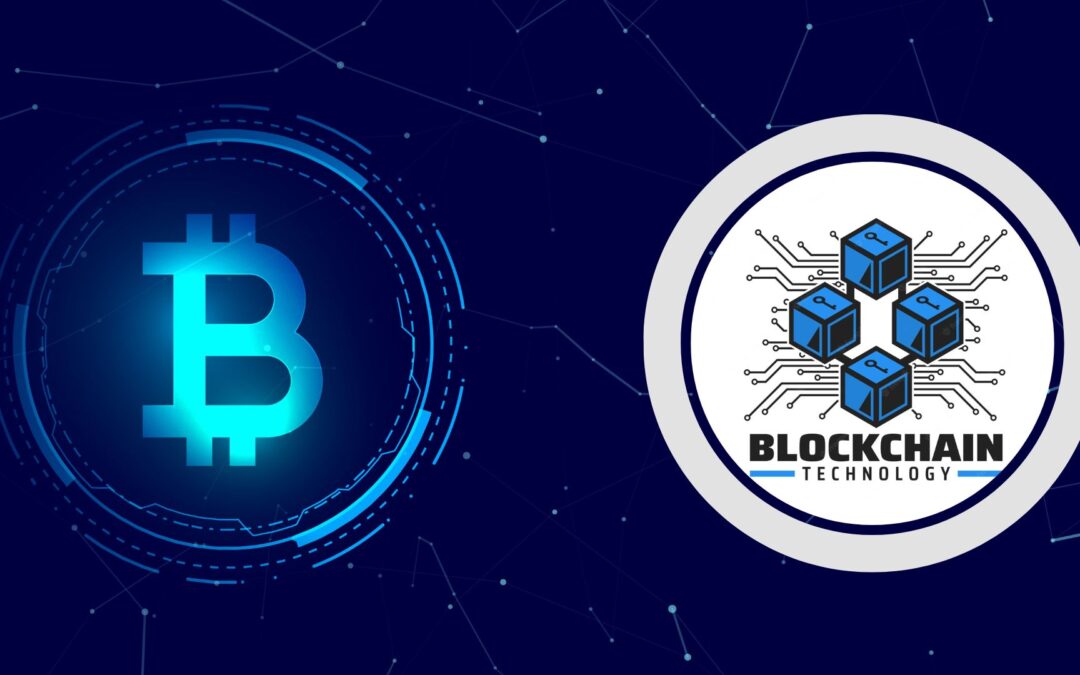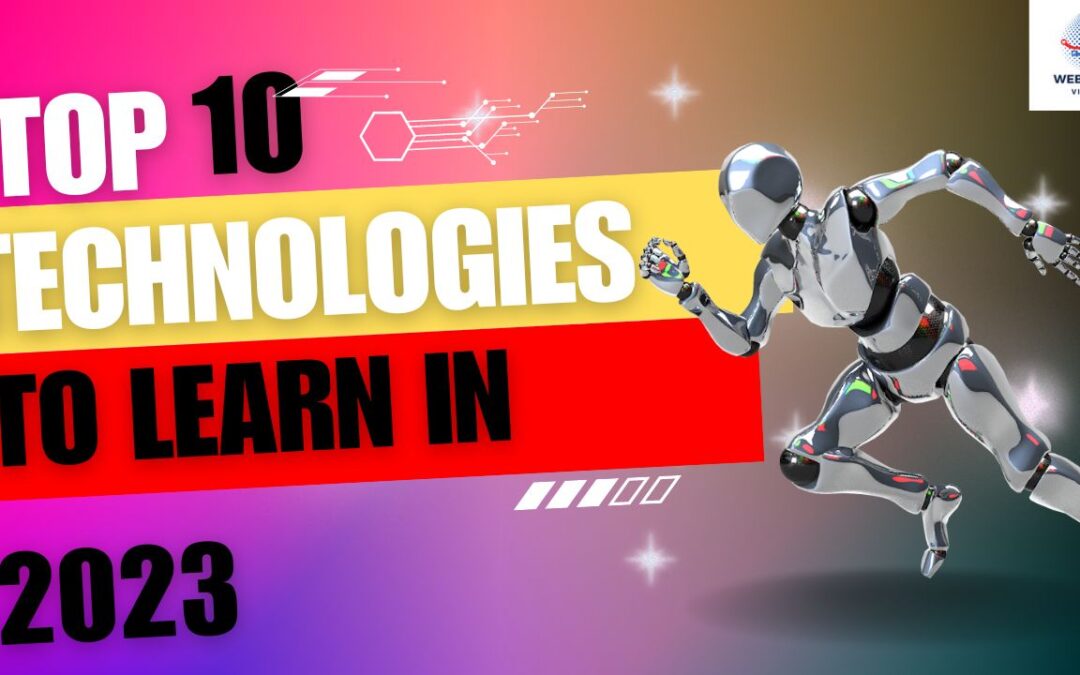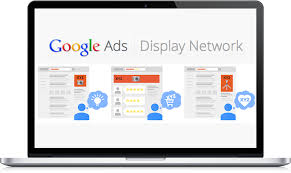
by admin | Aug 31, 2023 | Edge Computing, Technology
what is Edge Computing?
Edge computing is a technology paradigm that involves processing data closer to the source of its generation, rather than sending all data to a centralized cloud or data center for processing. This approach aims to reduce latency, improve response times, save bandwidth, and enhance the overall efficiency of data processing and analysis. While it’s not the latest technology (it has been gaining traction over the past few years), it remains a significant and evolving trend in the tech industry.
In traditional cloud computing models, data is sent to a central data center where it’s processed and analyzed. This works well for many applications, but it introduces latency, especially for applications that require real-time or near-real-time processing. Edge computing addresses this challenge by moving some of the processing closer to the “edge” of the network, closer to the devices generating the data.
Key features of edge computing include:
- Low Latency: By processing data locally, edge computing reduces the time it takes for data to travel back and forth between devices and a remote data center, resulting in faster response times.
- Bandwidth Savings: Sending only relevant or summarized data to the cloud instead of raw data reduces the amount of data that needs to be transmitted over the network, saving bandwidth and potentially reducing costs.
- Data Privacy and Security: Processing sensitive or private data locally can help maintain better control over data and mitigate risks associated with transmitting data over long distances.
- Offline Capabilities: Edge devices can continue to operate even when the network connection is lost or unreliable, as they can process data locally.
- Real-time Processing: Edge computing enables real-time processing and analysis of data, which is crucial for applications like IoT, industrial automation, and autonomous vehicles.
- Scalability: Distributing processing across multiple edge devices can help distribute the computational load and improve scalability.
- Reduced Cloud Dependency: While edge computing doesn’t replace cloud computing, it reduces the dependency on the cloud for every computing task.
Applications of edge computing include:
- Internet of Things (IoT): Edge computing is crucial for IoT devices that generate large volumes of data that need to be processed quickly, such as in smart cities, connected vehicles, and industrial sensors.
- Smart Grids: Edge computing can optimize the management and distribution of energy in real time, improving the efficiency of power grids.
- Video Surveillance: Real-time analysis of video feeds from security cameras can be performed at the edge to quickly identify threats or anomalies.
- Autonomous Vehicles: Edge computing enables fast processing of sensor data, allowing autonomous vehicles to make split-second decisions.
- Healthcare: Medical devices can process patient data at the edge to provide real-time insights, especially in critical situations.
- Retail: Edge computing can power personalized customer experiences, such as real-time inventory tracking and targeted advertising.
While edge computing offers numerous benefits, it also presents challenges such as managing a distributed computing environment, ensuring data consistency, and dealing with limited resources on edge devices. As technology continues to evolve, edge computing is likely to remain a crucial component of the broader computing landscape.

by admin | Aug 31, 2023 | Blockchain
What is Blockchain?
Blockchain is a decentralized and distributed digital ledger technology that records transactions across multiple computers in a way that is secure, transparent, and tamper-resistant. Each transaction, or “block,” is linked to the previous one, forming a chronological chain. This technology gained prominence as the underlying technology for cryptocurrencies like Bitcoin, but its applications have expanded beyond just digital currencies.
The key features of blockchain include:
- Decentralization: Unlike traditional centralized systems, blockchain operates on a network of computers (nodes) where each node has a copy of the entire ledger. This decentralized nature enhances security and eliminates the need for a single controlling authority.
- Transparency: Every participant in the blockchain network has access to the same information. Transactions are visible to all relevant parties, promoting transparency and trust.
- Immutability: Once data is added to the blockchain, it’s extremely difficult to alter or delete. This is achieved through cryptographic hashing and consensus mechanisms, making the blockchain tamper-resistant.
- Security: Transactions in a blockchain are verified through complex cryptographic algorithms, making it difficult for unauthorized parties to alter the data. This enhances the security of the system.
- Consensus Mechanisms: Blockchain networks use consensus algorithms to agree on the state of the ledger. Popular mechanisms include Proof of Work (PoW) and Proof of Stake (PoS), which ensure agreement among network participants.
- Smart Contracts: These are self-executing contracts with the terms directly written into code. They automatically execute actions when predefined conditions are met, reducing the need for intermediaries.
The role of blockchain in the latest technology landscape is significant and expanding:
- Cryptocurrencies and Finance: Blockchain’s most well-known application is in the realm of cryptocurrencies. It enables secure and transparent transactions without the need for intermediaries like banks.
- Supply Chain Management: Blockchain can provide end-to-end visibility in supply chains by recording every step of a product’s journey, reducing fraud, ensuring product authenticity, and improving traceability.
- Digital Identity: Blockchain can be used to create secure and tamper-proof digital identities, providing individuals with control over their personal data and reducing identity theft.
- Healthcare: It can improve the interoperability and security of electronic health records, ensuring accurate patient data sharing across healthcare providers while maintaining privacy.
- Voting Systems: Blockchain-based voting systems offer enhanced security, transparency, and tamper-proof record-keeping for elections.
- Real Estate and Land Title Records: Blockchain can simplify and streamline property transactions by providing a transparent and secure way to record ownership and transfer of real estate.
- Energy Trading and Grid Management: Blockchain can enable peer-to-peer energy trading, allowing consumers to buy and sell energy directly to one another.
- Cross-Border Payments: Blockchain can facilitate faster, cheaper, and more transparent cross-border transactions by eliminating intermediaries.
- Intellectual Property Protection: Blockchain can help creators prove ownership and protect their intellectual property rights.
- Digital Art and Collectibles: Blockchain technology is used to create verifiable scarcity and provenance for digital art and collectibles.
The role of blockchain in these areas is to create trust, security, and efficiency by eliminating intermediaries, ensuring data integrity, and enabling new models of interaction. However, it’s important to note that while blockchain holds significant promise, it’s not a solution for all problems and has its own challenges, including scalability and energy consumption.

by admin | Aug 31, 2023 | Technology, Top 10 Technologies to Learn in 2023
Top 10 Technologies to Learn in 2023
The Golden word of a wise man is “One machine can do the work of fifty ordinary men and no machine can do the work of one extraordinary man”.Furthermore, to become unprecedented in the 21st century you must be refreshed with the ongoing innovation of acquiring advancement in IT.
Some technologies were gaining momentum around that time and are likely to still be relevant in 2023. Here’s a list of the top 10 technologies that you might consider learning in 2023:
AI and ML continue to drive innovation across industries, from healthcare to finance. Learning how to build and deploy AI models could be immensely beneficial.
Blockchain technology is expanding beyond cryptocurrencies, finding applications in supply chain management, digital identity verification, and more.
The rollout of 5G networks is expected to continue, offering increased data speeds and low latency, enabling new possibilities in IoT, AR/VR, and more.
With the growth of IoT, edge computing is becoming crucial. It involves processing data closer to the source rather than in centralized data centers.
As digital threats continue to evolve, expertise in cybersecurity will remain essential to protect sensitive information and systems.
Although still in its early stages, quantum computing has the potential to revolutionize various fields by solving complex problems that are currently infeasible for classical computers.
AR and VR are finding applications in gaming, education, training, and even remote work, creating a demand for developers with expertise in these areas.
IoT involves connecting everyday devices to the internet, enabling them to collect and exchange data. It’s a field with immense growth potential.
With the rise of chatbots, virtual assistants, and language-based AI applications, NLP skills are highly valuable.
As sustainability becomes a bigger focus, skills in renewable energy technologies like solar, wind, and energy storage could be in high demand.
Remember that the relevance of these technologies can vary based on your interests, career goals, and the industries you’re involved in. It’s also important to stay updated with the latest trends and advancements in the tech world as you continue your learning journey.

by admin | Aug 27, 2023 | Display Ads, Google
What is Display Advertising and How Does Google Display Ads Expand Advertiser Visibility?
What is Display Advertising
Display advertising refers to a type of online advertising that uses visual elements, such as images, graphics, videos, and interactive media, to convey a marketing message to target audiences. These advertisements are displayed on websites, social media platforms, mobile apps, and other digital platforms that users interact with.
Key features of display advertising include:
- Visual Content: Display ads are known for their visual appeal. They often incorporate images, graphics, animations, and videos to capture users’ attention and convey the brand’s message.
- Variety of Formats: Display ads come in various formats, including banner ads, pop-up ads, video ads, interactive ads, and more. Each format has its own strengths and can be chosen based on campaign objectives and audience preferences.
- Placement: Display ads are strategically placed on websites and platforms that are relevant to the target audience. Advertisers can select specific websites, apps, or networks for ad placements, and they often use targeting options to reach users with specific interests, demographics, or behaviors.
- Targeting Options: Display advertising platforms allow advertisers to target their ads to specific audiences based on factors such as age, gender, location, interests, browsing history, and online behavior. This enables advertisers to deliver relevant ads to the right people.
- Retargeting: Display ads also support retargeting, which involves showing ads to users who have previously visited a website or interacted with the brand online. This helps reinforce brand awareness and encourages users to complete desired actions, such as making a purchase or filling out a form.
- Brand Awareness: Display advertising is often used to increase brand visibility and awareness. Since display ads are visually engaging, they can leave a lasting impression on users even if they don’t immediately click on the ad.
- Performance Metrics: Advertisers can track the performance of display ads using metrics such as impressions (number of times an ad is displayed), clicks, click-through rates (CTR), conversions, and return on investment (ROI).
- Ad Networks and Platforms: There are various ad networks and platforms that facilitate the placement of display ads. Google Display Network, Facebook Audience Network, and programmatic advertising platforms are examples of platforms that allow advertisers to reach a wide range of online audiences.
- Responsive Design: With the increasing use of mobile devices, display ads often need to be responsive, meaning they adapt to different screen sizes and orientations to provide a seamless user experience.
Display advertising is a fundamental component of digital marketing, and it’s used by businesses and organizations of all sizes to promote products, services, events, and initiatives. Successful display advertising campaigns involve creating compelling visuals, targeting the right audience, and analyzing performance data to optimize results.
How Does Google Display Ads Expand Advertiser Visibility?
Google Display Ads is a powerful advertising platform that enables advertisers to expand their visibility and reach a wide range of audiences across the internet. It allows advertisers to showcase their products, services, and brand on a network of websites, apps, and other digital platforms. Here’s how Google Display Ads can expand advertiser visibility:
- Massive Reach: Google Display Network (GDN) reaches over 90% of global internet users across millions of websites, blogs, news sites, and mobile apps. This extensive reach ensures that advertisers can connect with a diverse and vast audience.
- Diverse Ad Formats: Google Display Ads supports a variety of ad formats, including static images, animated GIFs, video ads, responsive ads, interactive ads, and more. This flexibility allows advertisers to choose the format that best suits their campaign goals and creative assets.
- Contextual Targeting: Advertisers can use contextual targeting to display ads on websites and pages that are contextually relevant to their products or services. Google’s algorithms analyze the content of web pages to determine the best placement for ads.
- Audience Targeting: Google Display Ads offers advanced audience targeting options. Advertisers can target based on demographics (age, gender), interests, behaviors, topics, keywords, and more. This precise targeting ensures that ads are shown to the right people.
- Remarketing: Remarketing allows advertisers to show ads to users who have previously visited their website or interacted with their brand. This technique helps reinforce brand awareness and encourages users to convert.
- Lookalike Audiences: Advertisers can create lookalike audiences based on their existing customer lists. Google identifies users with similar characteristics to the advertiser’s current customers, expanding the potential reach of the campaign.
- Managed Placements: Advertisers can select specific websites or apps for ad placements. This control allows them to target websites that align with their brand and audience preferences.
- Responsive Display Ads: Responsive ads automatically adapt to different ad sizes and placements. This feature ensures that ads look visually appealing and well-optimized across various devices and screen sizes.
- Performance Tracking: Google Display Ads provides detailed performance metrics such as impressions, clicks, click-through rates (CTR), conversions, and cost-per-click (CPC). Advertisers can analyze these metrics to refine their campaigns for better results.
- Ad Extensions: Advertisers can use ad extensions to provide additional information and enhance the ad’s visibility. These extensions can include call buttons, site links, location information, and more.
- Cross-Device Reach: Google Display Ads reaches users across different devices, including desktops, tablets, and mobile phones, allowing advertisers to engage with audiences wherever they are.
By leveraging the extensive reach, targeting options, and ad formats of Google Display Ads, advertisers can effectively increase their brand visibility, engage with potential customers, and drive desired actions such as website visits, sign-ups, and conversions.

by admin | Aug 27, 2023 | Pakistan, Pakistan–United Kingdom relations
Pakistan–United Kingdom relations
- Colonial Legacy: The history of Pakistan-UK relations can be traced back to the colonial era when the Indian subcontinent was under British rule. Following India’s partition in 1947, Pakistan emerged as an independent nation, and the UK played a role in recognizing Pakistan’s sovereignty.
- Diplomatic Relations: Pakistan and the UK established diplomatic relations soon after Pakistan’s creation in 1947. Both countries maintain embassies in each other’s capitals, Islamabad and London, respectively.
- Political Ties: The political relationship between Pakistan and the UK has had its ups and downs. Over the years, the two nations have engaged in dialogue on regional and international issues, including counterterrorism, trade, and development.
- Trade and Investment: The UK has been one of Pakistan’s important trading partners. Trade relations include commodities like textiles, machinery, and agricultural products. The UK is also home to a significant Pakistani diaspora, which has contributed to cultural exchange and remittances to Pakistan.
- Security and Counterterrorism: Both countries have cooperated on counterterrorism efforts, given their shared interests in combating global terrorism and extremism. Intelligence sharing and collaboration on security matters have been part of this cooperation.
- Education and Cultural Ties: The UK has been a popular destination for Pakistani students seeking higher education. Pakistani culture has also found a place in the UK through the Pakistani diaspora, contributing to a diverse and multicultural society in Britain.
- Aid and Development: The UK has provided development assistance to Pakistan over the years, focusing on areas such as education, healthcare, governance, and poverty alleviation. These efforts are aimed at promoting stability and development in Pakistan.
- Challenges: Like any relationship, Pakistan-UK relations have faced challenges as well. These challenges include addressing issues related to human rights, governance, and political stability. Controversial topics such as the Kashmir conflict have also occasionally strained the relationship.
- Bilateral Agreements: The two countries have signed various bilateral agreements to enhance cooperation in areas like trade, investment, education, and defense.
It’s important to note that the dynamics of international relations can change rapidly due to various factors such as geopolitical shifts, changes in leadership, and evolving global events. Therefore, for the most up-to-date information on Pakistan-UK relations, I recommend consulting official government sources, news outlets, and expert analyses.
Diplomatic relations Pakistan–United Kingdom
- Embassies: Both Pakistan and the United Kingdom have embassies in each other’s capitals. The Pakistani embassy is located in London, while the British High Commission is in Islamabad.
- High-Level Visits: Over the years, leaders from both countries have engaged in high-level visits to strengthen diplomatic ties. These visits often include discussions on various bilateral and international issues.
- Bilateral Agreements: Pakistan and the UK have signed several bilateral agreements covering areas such as trade, investment, education, defense, and culture. These agreements aim to promote cooperation and collaboration in various fields.
- Counterterrorism and Security Cooperation: Both countries have cooperated closely on counterterrorism efforts and security matters due to their shared interests in combating global terrorism and extremism. Intelligence sharing and joint efforts to address security challenges have been part of this cooperation.
- Trade and Economic Relations: Economic and trade relations play a significant role in their diplomatic interactions. The UK is one of Pakistan’s important trading partners, and discussions on trade policies, investment opportunities, and economic cooperation often take place during diplomatic engagements.
- Development Assistance: The UK has provided development assistance to Pakistan in various sectors, including education, healthcare, governance, and poverty alleviation. This assistance aims to support Pakistan’s development and stability.
- Cultural and Educational Exchanges: Cultural and educational ties are also an important aspect of their diplomatic relations. The UK has been a popular destination for Pakistani students pursuing higher education, and cultural exchanges contribute to mutual understanding between the two nations.
- Diaspora Engagement: The Pakistani diaspora in the UK is significant and plays a role in connecting the two countries. The diaspora’s contributions to both nations’ economies and cultures also impact diplomatic interactions.
Please note that diplomatic relations can evolve over time, and there may have been developments since my last update. For the latest and most accurate information on Pakistan-UK diplomatic relations, I recommend consulting official government sources, embassy websites, and reputable news outlets.
Trade and Investment Pakistan–United Kingdom
- Trade Relations: The United Kingdom is one of Pakistan’s major trading partners. Trade between the two countries involves a range of goods, including textiles, machinery, electronics, agricultural products, and more.
- Exports and Imports: Pakistan exports various products to the UK, with textiles and clothing being a significant portion of its exports. On the other hand, the UK exports machinery, chemicals, pharmaceuticals, and other products to Pakistan.
- Trade Volume: The trade volume between Pakistan and the UK has fluctuated over the years due to various economic factors and global events. Trade statistics can vary from year to year.
- Investment: The UK has made investments in various sectors of Pakistan’s economy, including energy, telecommunications, financial services, and retail. These investments contribute to economic development and job creation in Pakistan.
- Diaspora Remittances: The large Pakistani diaspora in the UK plays a significant role in terms of remittances sent back to Pakistan. These remittances contribute to Pakistan’s foreign exchange reserves and support families back home.
- Trade Agreements: Pakistan and the UK have engaged in discussions about trade agreements to facilitate and enhance bilateral trade. The nature and terms of these agreements can impact trade relations between the two countries.
- Investment Climate: The UK’s investment in Pakistan is influenced by factors such as the ease of doing business, regulatory environment, and political stability. An improved investment climate can attract more foreign direct investment (FDI) from the UK.
- Bilateral Investment Treaties: Both countries have worked on bilateral investment treaties to provide protection to investments made by each other’s nationals. These treaties offer legal safeguards for investors.
- Business and Economic Forums: Business and economic forums, as well as trade delegations, have been organized to promote trade and investment between the two countries. These events provide a platform for businesses to explore opportunities.
It’s important to note that economic relations can be affected by various factors, including economic policies, global economic trends, political developments, and trade agreements. Since my information is current as of September 2021, I recommend checking with official sources, economic reports, and news updates for the most recent data and developments regarding trade and investment between Pakistan and the United Kingdom.





